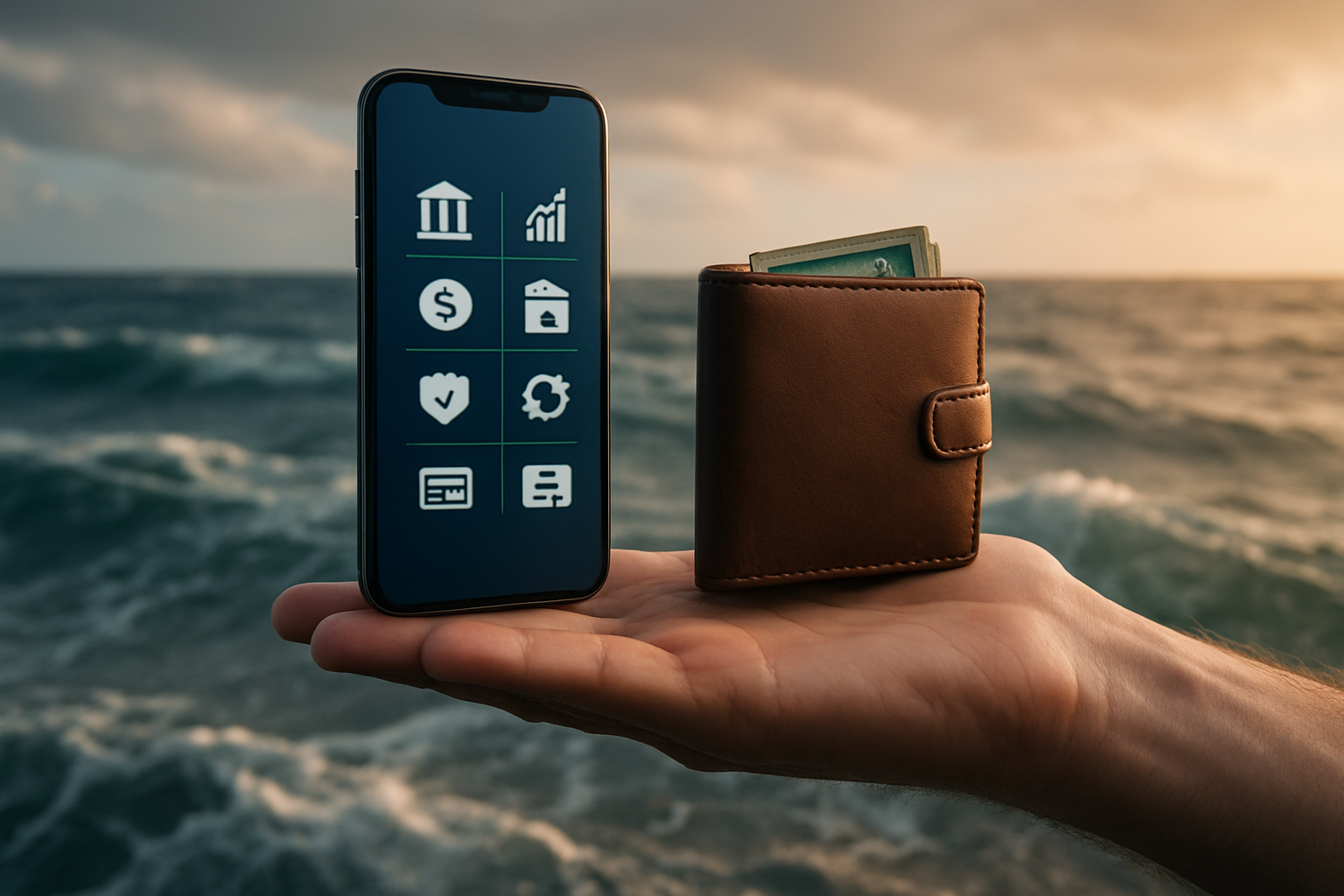Choosing the Right Digital Bank Account: A Complete Guide for Smart Banking
In today’s fast-paced digital world, choosing the right digital bank account is more important than ever. With countless options offering convenience, low fees, and innovative features, finding the perfect match for your financial needs can be overwhelming. This guide will help you navigate the essentials — from understanding key features and comparing benefits to identifying the best digital banks for your lifestyle — so you can make smarter, more confident banking decisions.

The shift toward digital banking continues to accelerate as consumers seek more flexible, user-friendly ways to manage their finances. Digital banks operate primarily online, eliminating the overhead costs associated with physical branches and often passing those savings to customers through reduced fees and competitive interest rates. However, not all digital banking platforms offer the same benefits, and choosing the right one requires understanding what features matter most for your specific financial situation.
Key Features to Look for in a Digital Bank Account
When evaluating digital bank accounts, several core features deserve attention. Mobile app functionality stands as a primary consideration, since most interactions with your account will occur through your smartphone. Look for intuitive interfaces, quick transaction processing, and seamless navigation. Account integration capabilities allow you to link external accounts, credit cards, and investment platforms for a comprehensive financial overview. Budgeting tools and spending analytics help track expenses and identify savings opportunities. Automated savings features can round up purchases and transfer the difference to savings, making it easier to build financial reserves without active effort. Customer support accessibility matters significantly, especially when technical issues arise. Digital banks should offer multiple contact channels, including chat support, email, and phone assistance with reasonable response times.
Comparing Fees and Accessibility
Fee structures vary considerably among digital banking platforms, making comparison essential before committing to an account. Monthly maintenance fees represent one of the most common charges, though many digital banks have eliminated them entirely. ATM fees can add up quickly if you frequently need cash, so understanding your bank’s ATM network and any reimbursement policies is crucial. Overdraft fees, transfer fees, and foreign transaction fees should all factor into your decision. Accessibility extends beyond fee considerations to include deposit methods, withdrawal options, and the ease of moving money in and out of your account. Some digital banks partner with retail locations for cash deposits, while others require mobile check deposits or transfers from linked accounts. Daily withdrawal limits and transfer restrictions can impact how freely you access your funds. Consider whether the bank offers features like early direct deposit access, which can provide funds up to two days before traditional payday.
| Digital Bank | Monthly Fee | ATM Access | Interest Rate (Savings) | Key Features |
|---|---|---|---|---|
| Chime | $0 | 60,000+ fee-free ATMs | 2.00% APY | Early direct deposit, automatic savings |
| Ally Bank | $0 | 43,000+ fee-free ATMs | 4.25% APY | No minimum balance, 24/7 customer service |
| Capital One 360 | $0 | 70,000+ fee-free ATMs | 4.00% APY | Multiple savings accounts, budgeting tools |
| Marcus by Goldman Sachs | $0 | N/A (savings only) | 4.40% APY | High-yield savings, no fees |
| SoFi | $0 | 55,000+ fee-free ATMs | 4.50% APY | Financial planning tools, member benefits |
Prices, rates, or cost estimates mentioned in this article are based on the latest available information but may change over time. Independent research is advised before making financial decisions.
Security Measures and Account Protection
Security should never be compromised when choosing a digital bank account. Federal Deposit Insurance Corporation (FDIC) insurance protects deposits up to $250,000 per depositor, per institution, providing the same safety net as traditional banks. Verify that your chosen digital bank carries FDIC insurance through a partner bank if it operates as a financial technology company rather than a chartered bank. Two-factor authentication adds an essential security layer, requiring verification beyond just a password when logging in or making transactions. Biometric authentication options like fingerprint or facial recognition provide convenient yet secure access. Real-time transaction alerts notify you immediately of account activity, enabling quick response to unauthorized charges. Card controls allow you to freeze your debit card instantly through the app if it’s lost or stolen. Encryption protocols protect your data during transmission and storage. Review the bank’s privacy policy to understand how your information is used and shared.
How to Choose the Best Digital Bank for Your Lifestyle
Your banking needs depend heavily on your financial habits and lifestyle circumstances. Frequent travelers benefit from digital banks offering no foreign transaction fees and widespread ATM access internationally. Those building emergency funds should prioritize high-yield savings accounts with competitive interest rates and easy transfer capabilities. If you receive regular direct deposits, early access features can improve cash flow management. Individuals who handle cash frequently need convenient deposit options, whether through retail partnerships or nearby ATM networks. Small business owners or freelancers might require features like invoicing tools, expense categorization, and separate business account options. Young adults or students often benefit from accounts with no minimum balance requirements and robust educational resources. Families may prefer banks offering joint accounts, teen banking options, and shared financial management tools. Consider your primary financial goals, whether saving for specific targets, managing daily expenses efficiently, or maximizing interest earnings on deposits.
Making the Transition to Digital Banking
Switching to a digital bank account involves several practical steps. Begin by opening your new account and making an initial deposit, which can often be done entirely online within minutes. Gradually redirect direct deposits by updating your information with your employer or benefits providers. Transfer automatic bill payments and subscriptions to avoid missed payments during the transition. Keep your old account open temporarily while ensuring all pending transactions clear and recurring payments successfully switch over. Once confident that all financial activities have migrated smoothly, you can close your previous account. Many digital banks provide switching assistance and checklists to streamline this process. Test the mobile app thoroughly during your first month, familiarizing yourself with all features and ensuring it meets your expectations. Take advantage of customer support resources to resolve any questions or concerns that arise.
Digital banking offers significant advantages in convenience, cost savings, and innovative features that traditional banking often cannot match. By carefully evaluating key features, comparing fees and accessibility options, verifying security measures, and aligning your choice with your lifestyle needs, you can select a digital bank account that enhances your financial management. The right digital bank should simplify your banking experience while providing the tools and support necessary to achieve your financial objectives.




